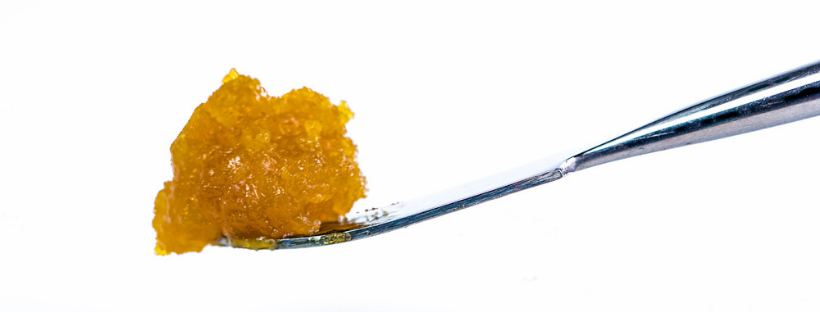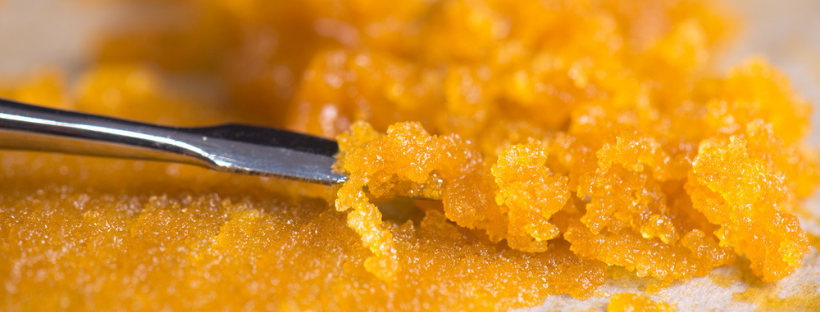Marijuana, Concentrates
What Is Live Resin & How to Consume It?
Cannabis concentrates and extracts are still relatively new to the Canadian marijuana market, but these products are surging in popularity.
Recreational marijuana use was legalized in Canada in 2018. One year later, in October 2019, Canadian officials rolled out “Canada 2.0”, which was the part of the plan that legalized cannabis concentrates, drinks, edibles, and topicals for use in the country. It would take a few months before products would start appearing on store shelves, and by early 2020, concentrate sales were ramping up.
These products are becoming more readily available in every province, and they now account for a huge percentage of Canada’s legal marijuana sales. A recent point-of-sale report finds cannabis concentrate sales in Ontario alone grew from about $43,000 in February to almost $360,000 in July, which could be a trend we see continuing.
There are several types of cannabis concentrates, including dabs, hash, shatter, sauce, and resin, to name a few. One key difference between concentrates and marijuana flowers is the THC concentration in these products. Marijuana flowers typically range in potency between 10 percent and 25 percent THC level, compared to concentrates that range between 50 percent and 80 percent THC concentration.
With such a high level of THC, concentrates may not be the best option if you’re trying cannabis for the first time.
What Is Live Resin?
One of the newest forms of cannabis concentrate on the market is live resin. Many users say, of all concentrates on the market, live resin comes closest to sharing the same aroma and flavour as cannabis flower. The man credited with introducing live resin to the market in 2011, Kind Bill, said it got its name because “the finished product smells exactly like the living product.”
Live resin is extracted from a marijuana plant through a process called full-spectrum extraction. During this process, an entire marijuana plant is cryogenically frozen to -178.9 C, which helps preserve the plant’s compounds, including the terpene profile in the flower.
Two processes can be used to pull the extract from the plant. Solvent-based extraction requires a chemical such as butane, CO2, or alcohol to remove the THC, cannabinoids, and other terpenes from the plant. No matter which chemical is used, this process will require you to purge the contaminants after the resin is extracted, which requires a large, vacuum-type tool.
Full-spectrum solvent extraction is required to get live resin, and that’s what separates this concentrate from others. Most concentrates are made from marijuana flowers that have been dried or cured, which destroys as much as 60 percent of the compounds in the plant.

How to Consume Live Resin
Live resin tends to be a little less waxy than other cannabis concentrates because the majority of the plant’s natural oils are preserved during the flash-freezing process. The most common forms of live resin are found in products that go by the names of sap, sugar, jelly, and budder.
No matter which method of consumption you choose, it’s a good idea to handle cannabis concentrates with a dabber tool because they can be quite sticky.
Dabbing is the most common way to consume live resin, but it’s recommended you find a dabber with a spoon-shaped tip instead of a flat one, which works better with the waxier concentrates. Your goal is to heat the resin to somewhere between 157 degrees and 204 degrees Celsius.
Dabbing requires a specific type of water pipe that has two key parts: a dab rig, which is similar to a bong tube, and a nail, or banger, made out of a strong material such as titanium or glass. Even though dabbing requires several accessories and can be tricky to figure out at first, this method is becoming extremely popular.
If you’re new to dabbing, here’s a quick rundown of how dabbing works and what you will need.
Start by heating up the banger until it glows red. Remove the flame and allow the banger to cool down to between 149 degrees and 232 degrees Celsius. This usually only takes about 10 to 15 seconds after the heat source is removed. Once that temperature range is reached, place the live resin on the surface of the banger and inhale slowly. You’ll want to make sure to clean all of the accessories from your dabber often because concentrates tend to leave behind a rather sticky residue.
If you’re looking for a less-involved method of consuming live resin, a vaporizer may be the direction to go. To use a vape pen with this concentrate, you’ll need a live resin attachment, which hooks right up to the pen’s battery chamber.
The quickest and possibly easiest way to use live resin is to simply add it to your joint or bowl.
Once you’re finished, put the remaining live resin in an airtight container and store it in a cool, dry location. Some people suggest keeping it in the refrigerator between uses.
What’s the Price Tag on Live Resin?
When cannabis concentrates were first legalized in Canada, product choices were slim, but that’s starting to change. As cannabis concentrates grow in popularity, product selection is growing quickly too, which is helping to bring the price down on many products, including the live resin.
One gram of live resin will typically cost about $50, compared to about $100 for a gram in the beginning, although you can still find some products closer to that price point. One reason live resin concentrate is a little more expensive is due to the complex process required to extract it from the cannabis plant.
Closing Thoughts
Cannabis concentrates and extracts contain highly potent THC levels, so if you’re relatively new to the world of cannabis, you may want to go easy at first with these products. As more concentrates make their way to the market, prices are expected to fall. Increased demand also typically leads to more regulation on products, so you know what you’re getting is quality.



